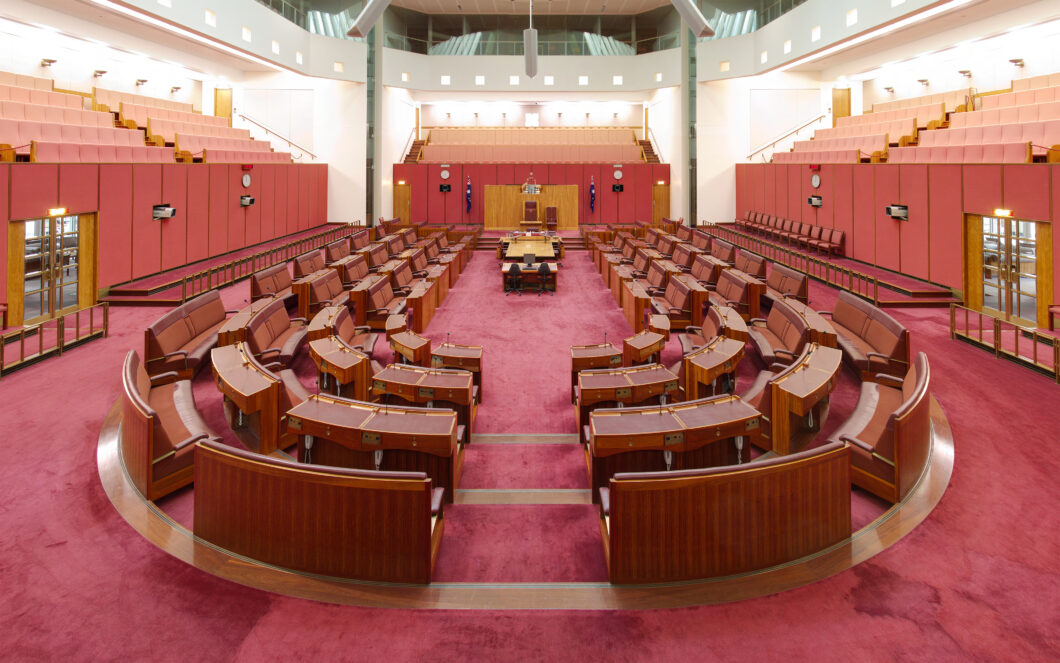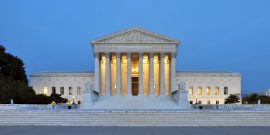A recent Court decision demonstrates that Morrison has received a well-deserved burial.
Finding Australia's Voice
If imitation is the sincerest form of flattery, then Australia, when drafting its written constitution back at the turn of the twentieth century, was shameless in its flattering of the United States. Australia probably has the most American-style written constitution in the democratic world, certainly in the anglosphere. It looks much like the first Madisonian version, without the Bill of Rights. The drafters looked at both Canadian and US-style federalism and plumped for the latter. They copied American-style strong bicameralism, which is very rare in the democratic world. They created a new capital city and put it outside any state. They opted for the same number of Senators per state. The shameless copying went on and then it was all stuffed into an over-arching Westminster model.
But as foreshadowed above, the drafters Down Under thought about and debated, but chose not to have any sort of national bill of rights. That remains the case still today. The only other major difference with the US Constitution had to do with amendments. The Australian drafters and ratifiers did not like either the Canadian or the American amending procedures which put the ultimate decisions wholly into the hands of the political class. Instead, they opted for a Swiss-style amending formula that requires all proposed constitutional amendments to be put to the people in a national referendum.
To hold such a referendum, either the House of Representatives or the Senate can force the issue and trigger one. Then, for the proposal to win, there are two legs that must be overcome. First, the proposal has to receive over half of the national vote. In procedural terms, this is not a high threshold. Secondly, any proposal must also garner over half the votes in a majority of the states—four of the six. This second leg is the concession to federalism. Still, compared to what constitutional amendments require in my native Canada or in the US, the Australian constitutional amendment process is not procedurally tough. Convince over half your fellow citizens nationally—as well as over half of them in over half the states—and bingo, the amendment wins.
Affording constitutional entitlements on the basis of group status is simply not in keeping with the bedrock commitments of a liberal democracy; it locks in a sort of unequal citizenship.
Readers might therefore be surprised to learn that of the 44 constitutional referenda that have been held in Australia since federation in 1901, only eight have succeeded. Thirty-six have failed. And of those failures, all but five failed on the first leg; proponents could not even get half of all Australians to agree to the change. This poor success rate leads many of today’s legal and political elites to complain that altering Australia’s constitution is too hard. I disagree. On reading the 44 proposed constitutional changes, I would have differed from the voters only twice. In fact, the real challenge for those wanting more referenda to succeed is not the procedures for amending the Constitution but rather the fact that the voters have tended to disagree with them. Of course, that is the danger (or the delight) when you take constitutional-change power out of the hands of the political and legal elites.
That bare outline takes us to what is currently happening in Australia. Australia is now debating one of the most significant attempts to alter her constitution in the country’s history, with a referendum likely to happen this coming October. The most succinct way I can describe it is to say that it looks very much like the 2016 Brexit referendum in Britain. Virtually all of what might be described as “the great and the good”—law societies, university professors, most all of the corporate class, legacy media, human rights organizations, and the administrators of professional sports leagues—are on one side of the debate. They oh-so-badly want this proposal to pass. On the other side are what Hillary Clinton might describe as “‘the deplorables”: middle and working-class Australia. I speak in general terms, of course, but you get the general idea.
So what is this constitutional referendum proposing? It seeks to entrench into the Constitution a body that will be known as “the Voice.” The left-of-centre Labor Party Prime Minister has opted to leave virtually all of the specific details for Parliament to fill in after the referendum. But it will be a body chosen only by Aboriginal people (again, all details about who counts as such, how they will be selected, how many members there will be on this body, and so on and so forth will be decided after the fact). The key point is that this Voice body “may make representations to the Parliament and the Executive Government on matters relating to Aboriginal peoples.” Remember those words as I’ll come back to them in a moment.
What is being proposed is in no way a modest change. It will go to the heart of Australia’s current governing arrangements, in moral, political, and legal terms. The claimed benefits made on behalf of this Voice body are meagre and exiguous. To the extent they exist at all, they deal in vague, amorphous symbolism. In practice, this Voice body is more likely to lead to bad outcomes than good ones—for Aborigines as well as the rest of us. It seems likely to create a highly political body that deals in rent-seeking, splitting even the Aboriginal community itself as it soaks up huge amounts of money and demands a purpose-built bureaucracy of its own that makes passing laws in this country even harder than it already is. It will open the way to judicial adventurism somewhere down the road.
Even without knowing the details of how it would actually function, I can already predict that the positions taken by this Voice body will be those of the activist class, far more often than not positions in accord with the political left in this country. That might be a benefit to some small section of Australian society. But to more of us, it will be a pretty big cost (leaving aside the fair likelihood that the lawyerly caste will be net winners should this pass). And though proponents say it will lead to unity and reconciliation, I think it is far more likely to lead to disunity, bitterness, and a sense that some groups in Australian life get special treatment solely based on birth.
The main moral problem is that this amendment will create special rights based on group status. Affording constitutional entitlements on that basis is simply not in keeping with the bedrock commitments of a liberal democracy; it locks in a sort of unequal citizenship. The government and its cheerleaders shout that it will not give Aboriginal people special rights, but that is patently false. They (however this group is eventually defined) will have a say on the membership of this Voice body and, in turn, only this body will have this special power to influence Parliament. No other Australian will have this power. Differentiating Australians based on group membership and identity politics is, in my view, a bad moral path to go down.
Recent cases from Australia’s top court, even without this amendment in play, have certainly leaned in the direction of what might be called judicial activism, if not of making things up out of thin air.
There are various political hazards should this amendment pass, but the biggest is that it will make law-making sclerotic, or more sclerotic than it already is. The truth is that no one thinks democratically-elected governments will more easily be able to pass laws once the Voice is in place. The question is simply how much harder it will get, and how much consultation, cajoling, and compromising will be required. One might also wonder, given the basic small government vs. big government comparative commitments of the two main parties, whether there will be an asymmetry in regards to the ease with which left-of-centre and right-of-centre parties will be able to walk this new constraining tightrope of having to seek the input of this Voice body.
Be that as it may, the biggest political danger with this Voice body is that the more it looks and acts as a sort of de facto fourth arm of government, the harder it will be to enact laws. That may also cash itself out in a calculation that it is better simply to buy off the Voice body with more money, or to tempt it with rent-seeking, rather than to pick a political fight.
And lastly, there are the legal and constitutional dangers. Think back to the key wording of the proposed amendment. A crucial question is whether “may make representations” will be read by a future High Court of Australia as a constitutional right to be consulted. I would bet big money that it will, though not immediately. Recent cases from Australia’s top court, even without this amendment in play, have certainly leaned in the direction of what might be called judicial activism, if not of making things up out of thin air.
A second legal uncertainty concerns the scope of input for this Voice body. That will depend on how one reads “may make representations to the Parliament and the Executive Government on matters relating to Aboriginal peoples.” What matters would qualify? One plain reading is that virtually every single Bill passed by Parliament will in some way or other affect Aboriginal peoples (just as they will affect the rest of us Australians). The worry here is that this new Voice body with the big bureaucracy it will put around itself would have a power—perhaps one the judges down the road deem to be a constitutional right—to make representations on just about every policy and every decision that affects Aboriginal people in any way at all, and to make them to the executive agencies as well as the legislature. The only way this would not happen is if you believe “Well, our top judges just wouldn’t do that.” And that is precisely what the Prime Minister is trying to assure everyone.
I think he is almost certainly wrong given the top court’s track record, the strong support of most of the judiciary for this amendment, and the fact that the top judges pay little to no attention to the intentions of the lawmakers when interpreting. There is even a structural issue in play as—for the first time ever—this proposed constitutional amendment is to be given its own chapter in the Constitution. And for a host of reasons that assuredly does not lessen the chances of future judicial activism.
Those are just a taste of the moral, political, and legal hazards of this proposal. But here’s the good news. When the referendum was being mooted and the details were hazy and largely being sold in feel-good terms as just about “recognising the Aboriginal peoples in the constitution,” some polls were over 70 percent in favour. As the arguments against it have slowly been heard, that polling support has dropped and dropped. Then, nationally, the right-of-centre Opposition Liberal party came out officially against this referendum (with a few dissenting Liberal MPs pledging to vote Yes). Now the polls show support at barely over 50 percent, one or two even below that. Yes, significant corporate, and even government money, is about to be used to launch a mightily expensive TV and social media campaign on behalf of the “Yes” case, which the “No” case cannot afford. And sure, many universities have made official announcements of support. But since day one I have predicted in print that this constitutional referendum will lose.
That prediction of mine is looking better and better by the day. Turns out the voters are a lot smarter than many of their supposed betters. At least that’s my take on it.



